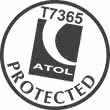Avalanche Safety
Avalanches are sudden downhill shifts of snow, which happen when the gravitational pull’s stronger than the bonding between the snow crystals. They do occur naturally but according to avalanche safety guru Henry Schniewind, “in 90% of accidents, snowboarders and skiers who get caught in avalanches set the avalanche off themselves, someone in their group does or someone above them triggers it”.
There’s a lot of prevention technology out there these days – snow patrols are more clued up to look out for them, and things like controlled explosions safely set off avalanches before they put anyone in danger. Resorts pull out every stop to make sure skiers and snowboarders are aware of the current conditions, and technology aids the survival of avalanches if you are caught up in one.
The Avalanche Danger Scale
Even the most qualified mountain guides have to check and respect the Avalanche Danger Scale. Resorts assess the area daily and this is where they highlight any hazards on slopes that are steeper than 30 degrees.
North American resorts indicate the danger level with colours and the European resorts use numbers. The scale always goes alongside a bulletin board, which shows the latest local information.
| Danger level | Symbol | SNO Says: | Official Advice from The European Avalanche Warning Services |
|---|---|---|---|
|
LEVEL 1 Low Risk |

|
The symbol you’ll be hoping to see all week: you might get a little powder slide or an avalanche triggered by a compact group of skiers on particularly extreme terrain, but it’s not very likely. |
The snowpack is well bonded and stable in general. Triggering is generally possible only from high additional loads** in isolated areas of very steep, extreme terrain. Only sluffs and small-sized natural avalanches are possible. |
|
LEVEL 2 Moderate Risk |

|
Large natural avalanches are still unlikely, although things like groups skiing closely together, grooming or avalanche blasting machines could be a trigger. |
The snowpack is only moderately well bonded on some steep slopes*, otherwise well bonded in general. Triggering is possible primarily from high additional loads**, particularly on the indicated steep slopes*. Large-sized natural avalanches are unlikely. |
|
LEVEL 3 Considerable Risk |

|
A medium-large natural avalanche could happen. It is likely that even a single skier could cause an avalanche. Look out for unstable snow which has the highest risk – don’t venture out without serious avalanche training. |
The snowpack is moderately to poorly bonded on many steep slopes*. Triggering is possible, even from low additional loads** particularly on the indicated steep slopes*. In some cases medium-sized, in isolated cases large-sized natural avalanches are possible. |
|
LEVEL 4 High Risk |

|
Medium-large natural avalanches are likely in some conditions. Avalanches could be caused on steep slopes by just a single skier. It is recommended not to go out even if you’re trained in avalanche survival. |
The snowpack is poorly bonded on most steep slopes. Triggering is likely even from low additional loads** on many steep slopes. In some cases, numerous medium-sized and often large-sized natural avalanches can be expected. |
|
LEVEL 5 Extreme Risk |

|
There’s a high likelihood of lots of large natural avalanches, even on slopes that aren’t very steep. Avoid all steep terrain. |
The snowpack is poorly bonded and largely unstable in general. Numerous large-sized and often very large-sized natural avalanches can be expected, even in moderately steep terrain. |
Avalanche terms explained
* ‘Moderately steep terrain’ refers to slopes that are less than 30 degrees, whereas a ‘steep slope’ has a gradient of over 30 degrees. ‘Very steep, extreme terrain’ is more than 40 degrees.
**A ‘low additional load’ is a single person who is skiing or snowboarding gently without falling, a single person snowshoeing or a group of people who are at least 10 metres apart from each other. A ‘high additional load’ is when 2+ skiers or snowboarders are packed closely together, or a single hiker or climber. Other things that cause a ‘high additional load’ are snow machines and explosives.
Avalanche advice
If you get caught by an avalanche, try and get to either side of the snow flow and/or grab a tree or rock to avoid getting dragged along. If that doesn’t work, try and ‘swim’ to stay on the top of the flow. Close your mouth to avoid snow blocking your airway - using your hands to dig air pocket around your nose and mouth will help you breathe if you do find yourself under the snow.
Avalanche equipment
If you’re planning on going off piste, always make sure you have specialist avalanche survival equipment with you.
- Transceiver: Transceivers or avalanche beacons use radio signals that everyone in the group set to ‘transmit’ when they venture out. If there’s an avalanche, you can switch it to ‘receive’ and use the signals to locate anyone under the snow.
- Probe: A collapsible pole that can be assembled and used for poking into the snow to locate a casualty from their transceiver signal. It’s been proved that people under the snow are found much faster with a probe.
- Shovel: A collapsible lightweight shovel can be carried in your rucksack and pulled out and assembled in an emergency if you need to dig someone, or yourself, out of danger.
- ABS Rucksack: These rucksacks come with a built-in airbag which inflates when you pull a cord attached to a small gas cylinder. The airbag helps you rise to the surface rather than being pulled deeper beneath the snow.
- There are other useful things to pack, such as flares, rope and a whistle. Most ski schools and guide companies can provide this equipment and it is available in nearly all ski shops.
Images ©Francois-Xavier De Ruydts











